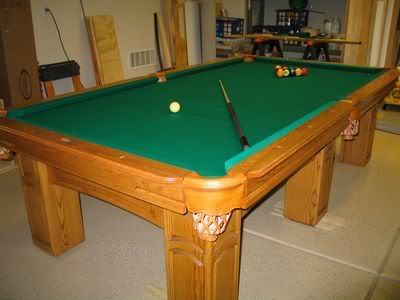AllAmericanJock
Registered
What thickness does slate come in and what are the benefits of thicker verses thinner. Is price a huge difference between each thickness of slate. Is the country of origin a concern for buy slate.
The table is a Vitalie and is solid cherry and has 6 legs, plus the slate support is all massive wood beams. Is there a way or site I could find out the difference between Italian and Brazilian slate. Is the maximum thickness of slate 1 inch or is there thicker slate?
What thickness does slate come in and what are the benefits of thicker verses thinner. Is price a huge difference between each thickness of slate. Is the country of origin a concern for buy slate.
... Also, the holes on the table, how do they drill and counter sink the holes to match the tables holes for the screws?


I'm not sure I understand that question. An answer, depending on what you are really asking, is that, while the holes in the slate are invariant, where the holes land on the subframe can vary slightly from assembly to assembly, and you may end up with new and different holes any time the table is disassembled and reassembled.
I have a Connelly Ultimate ('Chiricahua'):


And it is the quietest, truest-rolling (which really doesn't have much to do with its slate thickness) table I've ever played on.
Since the slate is the primary source of stability in a pool table, by virtue of its mass (although that Connelly subframe is massive - nevertheless, it's still only wood, not stone), and since the rails are directly attached to the slate, the stability of the rails can only be enhanced by a more massive slate. But, of course, this is only one variable among many, and there is the law of diminishing returns to be considered.
- s.west
p.s. You'd probably get better answers to some of these questions in the Talk to a Mechanic forum...
Thanks for the slate catalog, only thing it's in Canada and I'm not.